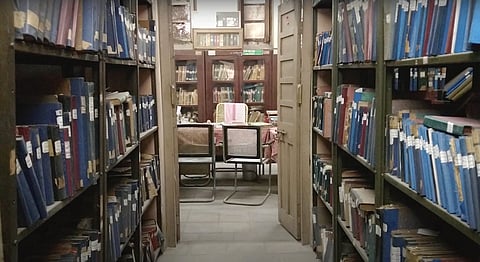India’s vanishing pasts
Between the din of the city, two Hyderabadi historians exchange WhatsApp messages:
"Where are you?"
"I'm at Idara. Something is always going on here."
"Oh, I wish I was there with you! What is happening over there, right now?"
"Four-hundred- and- fifty-year-old Golkonda fort era tope arrived. Some men just carried it in."
"Tope as in arms and ammunition, or something else?"
"Yes, the old armaments. The Qiledars' descendants didn't want to keep them in their house anymore, so they are giving them to Rafi Sahb,"
"Oh wow. Amazing. How is Rafi Sahb?"
"He's good. He's happy to be interviewed. He's asking about you. When will you be coming back here."
"I'll be there later this week. I really wish we could do something for Idara."
"Maybe we can start with writing an article about this place?"
***
Whose knowledge? Which archives?
Barely visible from across the new Errum Manzil metro and crushed between rows of commercial buildings, lies an abandoned citadel of knowledge: Idara-e Adabiyat-e-Urdu. Once a core institution of the city for scholarship of the Deccan, this vast library and its museum, Aiwan-e Urdu – like much of Hyderabad's heritage – exists in a state of disrepair. It is one of Hyderabad's fast disappearing independent archival institutions connected to a time before – as ruins beneath the consumerist ravages of the new city. And yet, as we step inside, walk up the stairs to the library in its tower, rummage through dusty catalogues and forlorn books – it feels as though we have entered a magical portal into another world.

